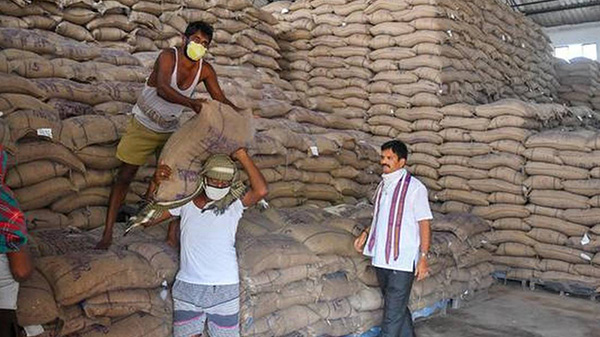Nuances of the Agricultural Value Chains in India

Earlier this week, I gave a talk on the subject in a Workshop of Development Professionals. One of the participants prepared this summary:
Drawing upon his extensive experience of setting up and managing businesses based on value chains in agricultural commodities, Sivakumar took off from where the previous speaker left. He said that he would reconcile the two seemingly conflicting points of views brought up in the previous session. On one hand, farmers as well as consumers feel that the intermediaries in the value chain are getting all the cream at their expense. The other was the large body of research which says that there is no evidence to conclude that middlemen in any specific commodity sector are making any more returns than justified by the value they add through capital they invest, the costs they incur and the risks they take. Once he had done that, he said, he would propose a sort of “tool kit” that the participants could use to address the inefficiencies in the value chains.
He said that the situation in India was characterized by small ticket size, large geographic dispersion, and lack of homogeneity on both the producer and the consumer end. To reach the agri produce to appropriate buyers located elsewhere, seeking products at different times, and in different form, required the middlemen to discover mechanisms such as larger than required risk cover, substituting skills for instruments and local knowledge for things like credit rating or quality testing or bank reach. They then instituted less than “global optimal” solutions. The research on market efficiency in whichever commodity focussed on “local” connections between two subsequent legs of a value chain and these were competitively shaped leading to the conclusion about market efficiency. Yet, from the point of view of global marketplace, Indian value chains were very inefficient since the summation of local optimal efficiencies did not add up to a global optimum for the whole value chain because of the non-value adding costs and unwarranted risks. This explained the simultaneous existence of “efficient markets” as tested by economists at micro level with gross inefficiencies in aggregate.
The adverse impact of the inefficiency – in terms of higher costs and risks – have been pushed to the weakest link in the chain, namely, the small farmer! As a result, the producer’s share of a consumer rupee remained low. Also, neither the full market opportunity from the evolving consumer preferences, nor the full production potential of India’s rich agro-climatic conditions have been realised.
He therefore suggested that any work to improve the lot of small farmers cannot be a “point” solution; interventions are needed to improve efficiencies of the value chains as a whole, by transferring the costs and the risks to the most capable players along the chain.
Citing his own experience in setting up ITC e-Choupals, he laid out an approach to build the “tool kit”. He then talked of two points that move along the value chain: the first is related to how much a producer would be willing to go down the value chain to reach out to the consumer and the other as to how much a consumer would be willing to go up towards production side. For the former, he talked of producers willing to push their “value offer points” by reaching out to the consumers in terms of vendor managed inventory. For the latter, he talked of contract farming as an illustration of consumer extending the “order penetration point” up the stream in the value chain.
By studying what he called the “transaction velocity” metrics, he said it would be possible to identify the non-value adding transactions in a value chain and then eliminate them through suitable interventions. ITC e-Choupals, for example, eliminated the physical movement of goods from farmers to APMC and then from there to the factories through competitive price discovery at farmer’s doorstep. Through different business models, ITC reaches out to 70000 villages in 220 districts across 16 states of the country giving them a competitive edge in sourcing.
Next he talked of “identity preservation” of the product along the value chain to mix & match the heterogeneity of production to cater to the heterogeneity in demand. Giving an example, he said there were 16 major wheat types grown in the country and 7 major atta types preferred by the consumers in different regions of the country. By setting up suitable sourcing, storage, and movement systems – both physical and information flow – to ensure that right wheat went to right mills and the right atta to market, ITC could capture and retain a huge market share in the Rs 5000 cr branded atta market.
Third he talked of “intensity of information” embedded in the products and using it for the purpose of deriving extra value for the producers. This comprised things like organic produce, responsible produce, IPM produced stuff etc. for which some segments of consumers are willing to pay more if there is evidence of the claim of the produce being what it claims to be. Fourth he talked about moving from backyard production to collective production systems, wherever “mass production to production by masses” ratios are favourable. He gave the example of small animal holders coming together for collective dairy farming.
He strongly recommended that it would be more productive for new entrants as well – irrespective of their size of operations – to start thinking in terms of steps to move towards a “global optimum” in their value chains rather than either engaging in a zero sum game of deriving more value by reducing someone else’s earning or by competing within the existing system alone.










